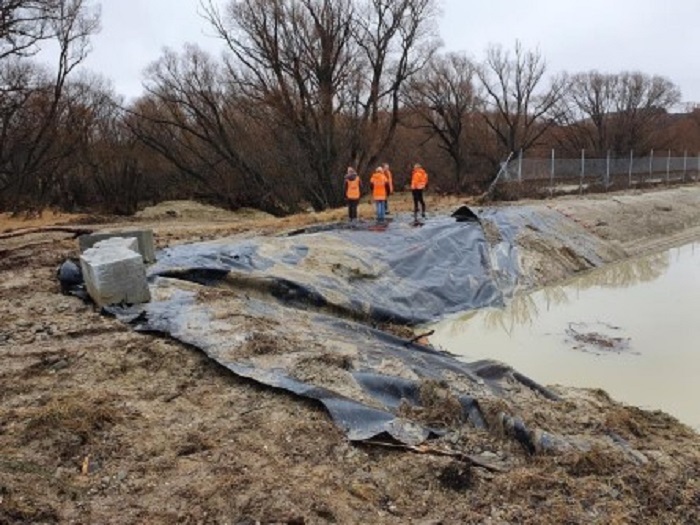Future bill could be eye-watering
Jill Herron
24 August 2022, 5:43 PM
 A large piece of debris is lifted out of Omakau’s wastewater plant following the July floods
A large piece of debris is lifted out of Omakau’s wastewater plant following the July floodsWater system repairs and other costs incurred after July’s flooding in the Maniototo and Manuherikia areas have totalled $165,000 but are a drop in the ocean compared to the cost of future-proofing the infrastructure.
The repair bill was approved yesterday (Wednesday August 24) by the Central Otago District Council for payment from its emergency event fund.
The majority of the costs were associated with the flooding at Omakau’s riverside wastewater treatment plant and ponds, which were completely inundated.
Tanker hire to bring water to residents and cartage costs to Naseby were included in the bill.
The event had highlighted a need for a more permanent solution to avoid future repair costs and to relocate discharges away from the river. This was something council had been looking into for some time.
Elected members were told that options being considered include a combined treatment plant for Alexandra, Clyde and Omakau, as both the Alexandra and Omakau resource consents were due for renewal in the next five years.
“A solution which provides treatment and discharge which meets current environmental requirements is expected to be in the region of $30 million to $60 million,” a council report estimated.

Messy business: A damaged section of pond-liner is pulled back into place and anchored following July's flooding of the Omakau wastewater ponds
The ponds at Omakau were constructed in 1965 then largely untouched until an upgrade in 2018 when they were cleared of sludge and a synthetic liner added.
“In the last 18 months security fencing has also been installed, and a power supply provided to enable an inlet screen to be installed,” yesterday’s meeting heard.
Previously the ponds were flooded in July 2017 when considerable damage occurred, and again in November the following year.
In 2017 the pond embankment and concrete wavebands on both ponds were damaged. Both floods deposited gravel and silt into the ponds, the extent of which was not fully understood until after they were emptied.
At its peak flow during last month’s flood, the Manuherikia River carried a huge volume of water of 500 cubic meters per second. Only the tops of the security fence were visible at the peak of the flood.
Cr Tracey Paterson said yesterday it was very important for council staff to keep the local community informed about the ongoing repair work and future plans.




